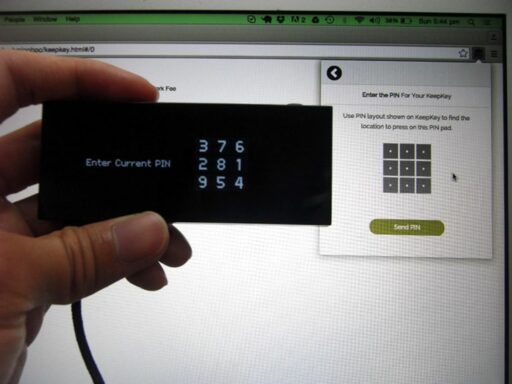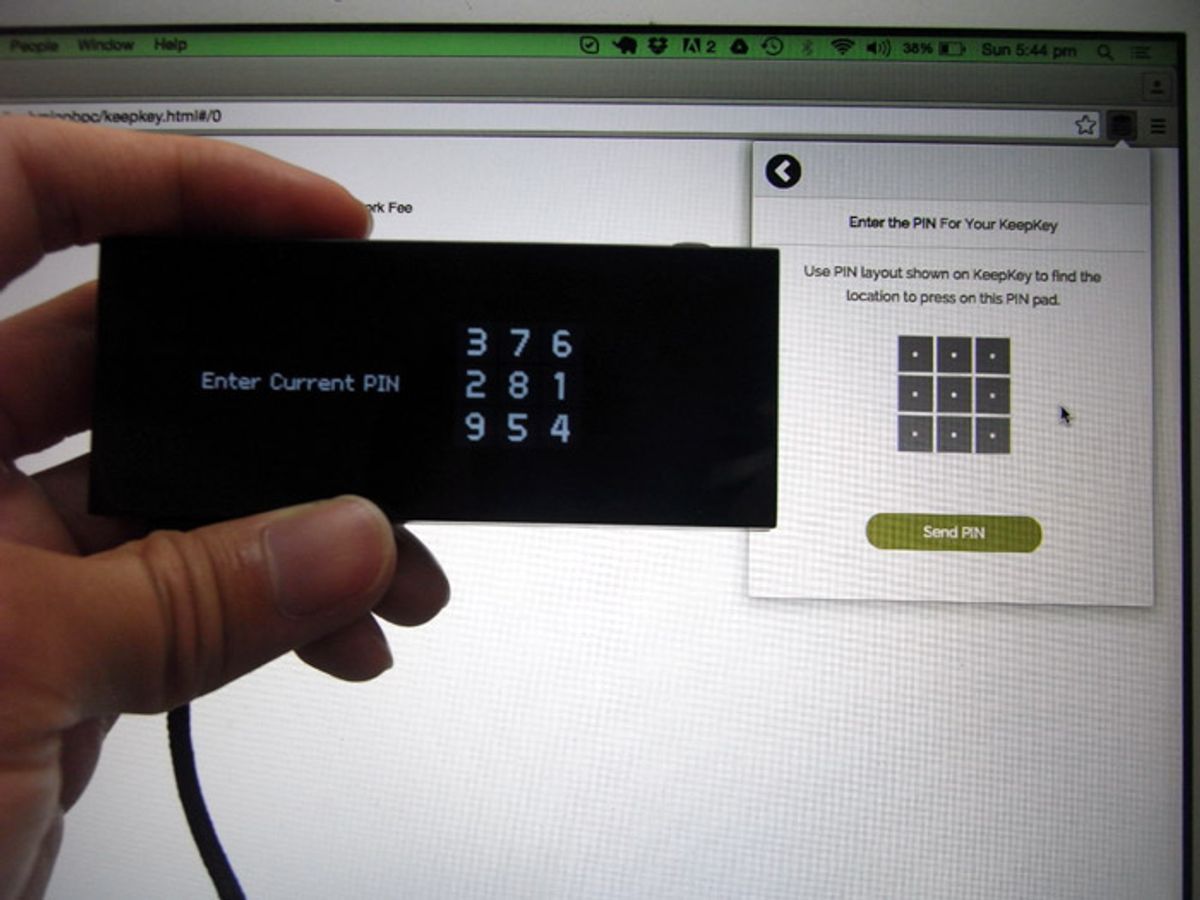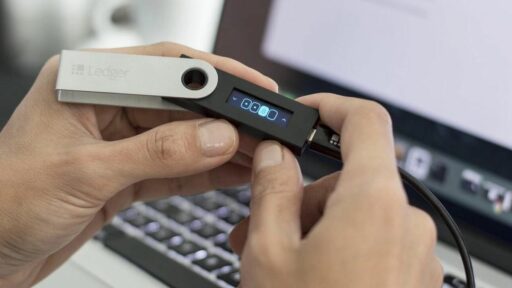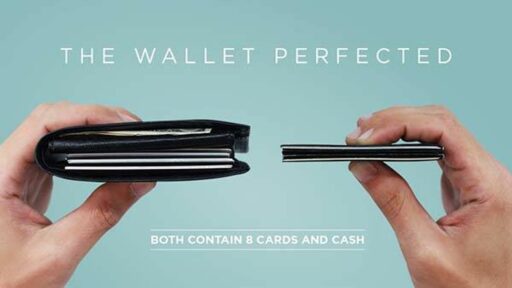Creating a crypto wallet is an essential step for anyone looking to engage with cryptocurrencies. Whether you’re a seasoned investor or new to the digital currency world, having a secure and functional wallet is paramount. This step-by-step guide is designed to help you navigate the process of setting up your own crypto wallet, from understanding the different types available to maintaining security and exploring advanced features. Follow along to ensure that your crypto assets are well-protected and easily accessible.
Key Takeaways
- Identify your cryptocurrency needs and choose the appropriate wallet type, balancing convenience and security.
- Ensure the wallet service you select is reputable and offers the features you require, then proceed with installation.
- Prioritize wallet security by setting strong passwords, enabling two-factor authentication, and keeping private keys offline.
- Regularly update your wallet and back up your data to protect against loss or theft, staying alert to new security threats.
- Explore and utilize advanced wallet features to enhance your crypto experience, such as integration with other services.
Understanding Cryptocurrency Wallets

Defining Your Crypto Wallet Needs
Before diving into the world of cryptocurrencies, it’s crucial to define your specific needs and objectives. Are you looking for a wallet for daily transactions, long-term investment storage, or a combination of both? Consider the following points to help clarify your requirements:
- Purpose of the wallet (e.g., trading, investment, multi-currency support)
- Desired level of security (e.g., two-factor authentication, multi-signature)
- Type of wallet preferred (e.g., hardware, software, mobile, web)
- Frequency of transactions
- Ease of use and user interface preferences
It’s essential to balance convenience with security. A wallet that’s too cumbersome to use may discourage regular use, while one that’s too simple may not offer adequate protection.
Once you’ve outlined your needs, you’ll be better equipped to choose a wallet that aligns with your cryptocurrency goals. Remember, the right wallet for someone else may not be the right wallet for you. Personalization is key in the crypto space.
Choosing Between Wallet Types
When venturing into the world of cryptocurrencies, selecting the right type of wallet is a pivotal decision that balances accessibility and security. The primary categories are software, hardware, and paper wallets, each with distinct features catering to different user preferences.
-
Software wallets, such as mobile and desktop applications, offer convenience and quick access to funds, making them ideal for everyday transactions. However, they are more susceptible to online threats due to their constant connection to the internet.
-
Hardware wallets resemble secure USB devices and are designed for heightened security. They store private keys offline, making them less vulnerable to hacking. This type of wallet is recommended for those holding significant amounts of cryptocurrency or for long-term storage.
-
Paper wallets are a form of cold storage, providing a physical copy of your public and private keys. They are immune to cyber-attacks but require careful handling to prevent loss or damage.
The choice of wallet type should align with your investment strategy, frequency of transactions, and risk tolerance. It’s crucial to weigh the trade-offs between ease of use and security to manage your digital assets safely.
Security Considerations for Wallets
When it comes to securing your crypto assets, the type of wallet you choose plays a crucial role. Always use all your wallet’s security settings, such as Two-Factor Authentication (2FA), biometric authentication, and multi-signature options. These features are your first line of defense against unauthorized access.
Regularly updating your wallet’s software is essential for maintaining security. Updates often include patches for vulnerabilities that could be exploited by hackers. Additionally, creating backups and recovery phrases is not just a good practice; it’s a necessity for recovering your assets in case of device failure or loss.
The security of your wallet also depends on the physical security of any backup documents. It’s imperative to store them in a secure location, safe from theft or damage.
Here’s a quick checklist to ensure you’re covering the basics of wallet security:
- Use all available security settings (2FA, biometrics, multi-signature)
- Keep your wallet software updated
- Create backups and recovery phrases regularly
- Purchase hardware wallets from reputable brands
- Create a strong, unique password for your wallet
- Regularly manage risks and stay informed on technological trends
Setting Up Your Crypto Wallet

Selecting the Right Wallet Service
Selecting the right wallet service is a critical step in setting up your crypto wallet. The choice you make should align with your security needs, asset preferences, and the level of convenience you require. Consider the following points when making your decision:
- Evaluate the security features of each wallet service. Look for options like two-factor authentication, multi-signature support, and backup capabilities.
- Determine the compatibility with the cryptocurrencies you intend to use. Not all wallets support every type of digital asset.
- Assess the user interface and ease of use. A wallet that is difficult to navigate can lead to errors and frustration.
Remember, no single wallet can fulfill all functions perfectly, but some offer a broad range of features that might suit your needs. It’s essential to balance accessibility with security; while mobile wallets offer convenience, hardware wallets provide enhanced security.
Finally, consider the reputation and customer support of the wallet provider. A service with a strong track record and responsive support can be invaluable, especially for new users navigating the complexities of cryptocurrency management.
Installing Wallet Software
Once you’ve selected the right wallet service, the next step is to install the wallet software. Begin by downloading the application from a trusted source, such as the official website or a reputable app store, to avoid any malicious software. For web-based wallets, always verify you’re on the official site to prevent phishing attempts.
Follow these general steps to install your wallet software:
- Download the wallet application or browser extension.
- Create a strong, unique password for your wallet.
- Look for and enable additional security features within the app.
Remember, the security of your wallet starts with its installation. Ensure that you are downloading the correct software and that your password is robust and stored securely.
After installation, familiarize yourself with the wallet’s interface and settings. Take the time to understand the functions available to you, as this will be crucial when securing and using your wallet effectively.
Securing Your Wallet
Once your wallet is installed, securing it should be your top priority. Start by creating a strong, unique password for your wallet. This is the first line of defense against unauthorized access. Avoid using easily guessable passwords or repeating them across different platforms.
Next, enable all available security settings provided by your wallet service. This often includes Two-Factor Authentication (2FA), biometric authentication, and possibly multi-signature options if they are available. These features add layers of security to your wallet, making it harder for malicious actors to gain access.
It’s crucial to keep your wallet’s software up to date. Regular updates contain security enhancements that protect your assets.
Finally, set up and securely store your wallet’s recovery phrase. This phrase is essential for recovering your assets if you lose access to your wallet. Make it a habit to create backups of your wallet and recovery phrases often, storing them in a secure location separate from your wallet.
Funding and Using Your Wallet

Adding Cryptocurrency to Your Wallet
Once you have your crypto wallet set up, the next step is to add funds to it. Adding cryptocurrency to your wallet is a straightforward process, but it requires careful attention to detail to ensure the transactions are completed successfully.
To begin, you’ll need to acquire cryptocurrency. This can be done through a variety of methods, including purchasing from an exchange, receiving it as payment, or transferring from another wallet. Here’s a simple guide to help you get started:
- Purchase cryptocurrency from an exchange using fiat money (like USD, EUR, etc.) and transfer it to your wallet.
- Receive cryptocurrency as payment for goods or services and have it sent directly to your wallet’s public address.
- Transfer from another wallet by sending the cryptocurrency to your wallet’s public address.
Remember to double-check the public address before confirming any transaction. A single mistake can lead to the loss of your funds.
After successfully adding cryptocurrency to your wallet, your balance will be updated, reflecting the new amount. You can then proceed to use your funds for trading, investing, or making purchases. Always ensure that your wallet is secure and that you are aware of the security measures needed to protect your assets.
Making Transactions
Once you’ve added funds to your wallet, you’re ready to make transactions. Sending and receiving cryptocurrency involves a transfer of ownership rights, not the physical assets themselves. Here’s a simple guide to making transactions:
- Create account on the platform of your choice and secure with 2FA to enhance security.
- Verify the wallet address before initiating a transaction to avoid errors.
- Confirm the transaction details, such as the amount and recipient address, before sending.
- Monitor the transaction status; blockchain operations can vary in confirmation times.
Remember, the security of your funds is paramount. Always deposit funds safely and choose a reputable exchange or wallet service with strong security measures.
Understanding the underlying technology can be beneficial. For instance, transactions on Layer 1 blockchains are settled directly on the main blockchain, which can lead to scalability issues. In contrast, Layer 2 solutions process transactions off-chain or on a sidechain, allowing for faster and cheaper transactions.
Receiving Funds
Receiving cryptocurrency is a straightforward process, but it requires careful attention to detail to ensure the funds are credited to your wallet correctly. Always double-check your wallet’s public address before sharing it with the sender. Mistakes in the address can lead to irreversible loss of funds.
To receive funds:
- Locate your wallet’s public address within the wallet interface.
- Share this address with the person or entity sending you cryptocurrency.
- Monitor your wallet for the incoming transaction. This may include push notifications or email alerts to confirm the transaction has been completed.
It’s crucial to maintain the security of your wallet’s private key. Access to your assets depends on it, and it must be securely stored to avoid unauthorized access or theft.
Integrating additional services, such as decentralized finance (DeFi) platforms, can provide opportunities to use your funds actively within the crypto ecosystem. However, always prioritize security and be cautious of the services you connect to your wallet.
Maintaining Wallet Security

Regularly Updating Security Features
Keeping your crypto wallet secure is an ongoing process that requires regular attention. Always keep your wallet’s software updated to benefit from the latest security enhancements. Developers continuously work to improve wallet security, and updates often include patches for newly discovered vulnerabilities.
- Use all your wallet’s security settings, such as Two-Factor Authentication (2FA), biometric authentication, and multi-signature options.
- Create backups and recovery phrases often. These are crucial for restoring access to your wallet if needed.
Regular updates and diligent use of security features are the cornerstones of maintaining a robust defense against cyber threats.
Remember, the balance between security and usability is key. Enhancements like Multi-Factor Authentication (MFA) and awareness of phishing tactics contribute to your wallet’s data sovereignty and protection against cyber threats.
Backing Up Your Wallet
Backing up your wallet is a critical step in maintaining access to your cryptocurrencies in the event of device failure, loss, or theft. Always back up your recovery phrase, also known as a seed phrase, as it is the ultimate key to your assets. This phrase typically consists of 12 to 24 words and should be stored in a secure and private location.
To ensure that your backup is effective, consider the following steps:
- Write down the recovery phrase on paper and store it in a safe or a secure location that only you can access.
- Avoid storing your recovery phrase on any device connected to the internet to protect against online theft.
- Use a secure password manager or physical storage medium to keep your private key safe.
- Regularly update your backup, especially after creating new addresses or making significant changes to your wallet.
Remember, your recovery phrase is the only way to restore access to your funds if your wallet is compromised. Treat it with the same level of security as you would with other sensitive personal information.
Staying Informed on Security Threats
In the ever-evolving landscape of cryptocurrency, staying informed on security threats is not just recommended; it’s imperative. As you continue to use your crypto wallet, make it a habit to keep abreast of the latest security threats and trends. This proactive approach can be the difference between safeguarding your digital assets and falling victim to the next sophisticated cyber attack.
Key management in digital asset security is crucial. Self-sovereignty, advanced security measures, and regular audits are essential to protect against common threats like phishing, malware, and social engineering attacks.
Here are some practical tips to help you stay informed:
- Subscribe to security newsletters from reputable sources in the crypto space.
- Join online forums and communities that focus on cryptocurrency security.
- Attend webinars and online training sessions to enhance your knowledge.
- Follow thought leaders and experts on social media for timely updates.
Remember, the responsibility of keeping your wallet secure is a continuous process that requires diligence and an ongoing commitment to education.
Advanced Wallet Features and Customization

Exploring Additional Wallet Functions
Once you’ve set up the basic functions of your crypto wallet, delving into additional features can significantly enhance your experience. Advanced features not only provide convenience but also open up new possibilities for interaction within the crypto ecosystem.
For instance, integrating DeFi platforms directly into your wallet can allow you to participate in lending, borrowing, or trading, potentially earning fees in the process. This integration can transform a simple wallet into a powerful financial tool. Additionally, features like commission calculation bring transparency and ease to transaction processes, showing users the exact fees for their transactions.
- Cross-chain compatibility
- Smart contract support
- Privacy features
- Community engagement tools
By continuously engaging with the community and iterating based on feedback, you can ensure that your wallet stays relevant and meets the evolving needs of users.
Remember to test and debug new features thoroughly to maintain the security and functionality of your wallet. Deploying and monitoring your wallet’s performance in real-world usage is crucial for ongoing success.
Customizing Wallet Settings
Customizing your wallet settings is crucial for a personalized and efficient user experience. Adjusting preferences to match your usage patterns enhances security and functionality. For instance, you can set up notifications for transactions, change display currencies, and manage address books for regular contacts.
- Enable or disable notifications for transactions
- Select preferred fiat currency for display
- Manage your address book for frequently used contacts
- Adjust transaction fee settings based on priority
Remember, the way you configure your wallet can significantly impact its performance and security. Regularly review and adjust your settings to keep your wallet optimized.
Advanced users may delve into settings for transaction fees, choosing to pay higher fees for faster confirmations or lower fees for non-urgent transactions. It’s also wise to explore privacy settings, such as changing addresses for each transaction to enhance anonymity.
Integrating with Other Services and Apps
Integrating your crypto wallet with other services and apps can significantly enhance its functionality and user experience. Compatibility with both iOS and Android platforms is crucial for accessibility, and using frameworks like React Native allows for the development of cross-platform applications with a single codebase.
For those looking to expand their wallet’s capabilities, consider the following integrations:
- Simplified connections to decentralized exchanges (DEXes) for seamless asset trading.
- Partnerships with DeFi platforms to participate in lending, borrowing, or trading, potentially earning fees.
- Collaborative opportunities with businesses for sponsored content or affiliate marketing.
By strategically integrating with various services and apps, your wallet can become a more versatile tool, not just for managing cryptocurrencies but also for engaging with the broader digital asset ecosystem.
Conclusion
Creating a crypto wallet is a crucial step for anyone looking to engage with the world of digital currencies. Throughout this guide, we’ve walked you through the various stages of creating different types of wallets, from software to hardware and even paper wallets. By now, you should have a clear understanding of the process and the considerations involved in securing your crypto assets. Remember to define your needs, understand the capabilities of each wallet type, and prioritize security in your choices. Whether you’re a beginner or an experienced user, we hope this guide has been informative and helpful in setting up your crypto wallet. If you found this guide useful, don’t hesitate to share it with friends or reach out for further assistance in developing your crypto wallet application. Our team is dedicated to helping your ideas come to life with high-quality and convenient applications. Thank you for reading, and here’s to your journey in the ever-evolving world of cryptocurrency!
Frequently Asked Questions
What is a cryptocurrency wallet?
A cryptocurrency wallet is a digital tool that allows you to store, send, and receive digital currencies like Bitcoin and Ethereum. It contains private keys that provide access to your cryptocurrencies, ensuring their safety and accessibility.
What are the different types of crypto wallets?
Crypto wallets can be categorized as software wallets (desktop, mobile, web), hardware wallets (physical devices that store cryptocurrencies offline), and paper wallets (physical documents containing your public and private keys).
How do I choose the right crypto wallet for me?
Consider your security needs, the types of cryptocurrencies you want to store, ease of access, and whether you plan to trade frequently. Hardware wallets are more secure, while software wallets offer more convenience for active trading.
How can I secure my crypto wallet?
To secure your crypto wallet, use strong passwords, enable two-factor authentication, regularly update your wallet software, back up your wallet, and never share your private keys with anyone.
What should I do if I lose access to my crypto wallet?
If you lose access to your wallet, you can restore it using your backup seed phrase or private key. Without these, it may be impossible to recover your funds, highlighting the importance of keeping backups in a safe place.
Can I use my crypto wallet for multiple cryptocurrencies?
Many wallets support multiple cryptocurrencies, allowing you to manage different assets in one place. Check the wallet’s specifications to ensure it supports the currencies you’re interested in.





